201571030310/201571030329《小学四则运算训练软件》结对项目报告
一.项目源码。
Github地址:https://github.com/loadrove/SoftWareTest
二.项目报告。
1.需求分析:
(1)由计算机从题库文件中随机选择20道加减乘除混合算式,用户输入算式答案,程序检查答案是否正确,每道题正确计5分,错误不计分,20道题测试结束后给出测试总分;
(2)题库文件可采用实验二的方式自动生成,也可以手工编辑生成,文本格式如下:

(3)程序为用户提供三种进阶四则运算练习功能选择:百以内整数算式(必做)、带括号算式、真分数算式练习;
(4)程序允许用户进行多轮测试,提供用户多轮测试分数柱状图,示例如下:
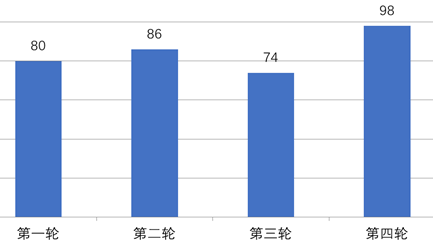
(5)程序记录用户答题结果,当程序退出再启动的时候,可为用户显示最后一次测试的结果,并询问用户可否进行新一轮的测试;
(6)测试有计时功能,测试时动态显示用户开始答题后的消耗时间。
(7)程序人机交互界面是GUI界面(WEB页面、APP页面都可),界面支持中文简体。
2.软件设计:
(1)设计流程图:
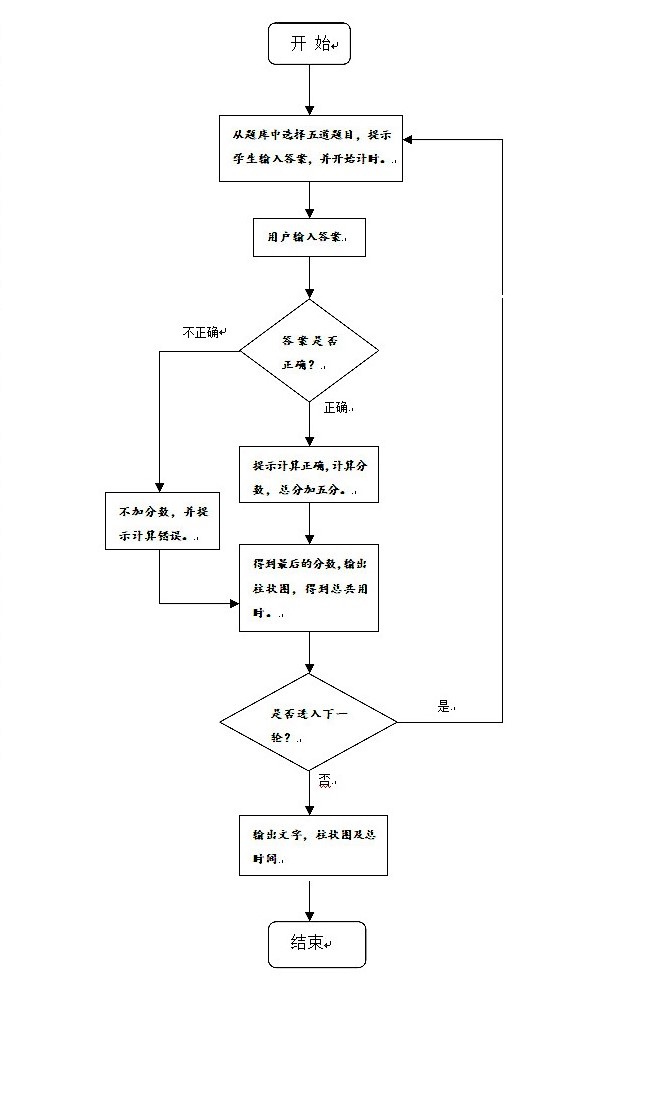
(2)设计类图

1> ReadFile类是读取所有文件,将生成的算式全部读出来,以栈的形式放入数组内;
2> Fraction类是关于分数的计算,分为真分数和假分数;
3> Calculate类是百内整数的加减乘除运算;
4> Textview就是显示最终运算结果,以及显示分数,计时等功能。
(3)核心代码:
1>读取生成的文件:
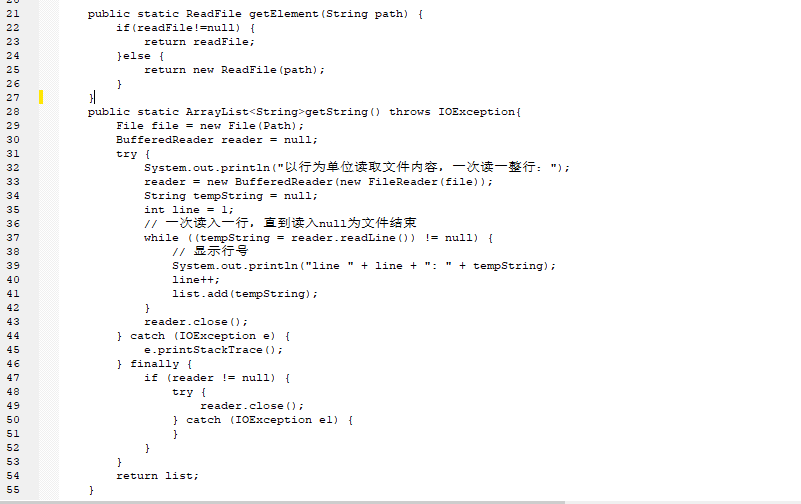
2>分数的运算:
public int getNumerator() { return c; } public int getDinominator() { return d; } public void selfTrim() { int maxCommon=commonDivisor(c,d); //求出两个数的最大公约数。 c=c/maxCommon; //分式为最简。 d=d/maxCommon; //整理正负号。 if((c>0&&d<0)||(c<0&&d<0)) { c=-c; d=-d; } } public String toString() //重写tostring(). { if(c==0||d==1) //分母为1 直接输出分子. { return Integer.toString(c); } return Integer.toString(c)+"/"+Integer.toString(d); //输出c/d. } //----- plus public Fraction minus(Fraction f2) { int newNumerator=c*f2.getDinominator()-d*f2.getNumerator(); int newDinominator=d*f2.getDinominator(); int maxCommon=commonDivisor(newNumerator,newDinominator); return new Fraction(newNumerator/maxCommon,newDinominator/maxCommon); } //---- minus public Fraction plus(Fraction f2) { int newNumerator=c*f2.getDinominator()+d*f2.getNumerator(); int newDinominator=d*f2.getDinominator(); int maxCommon=commonDivisor(newNumerator,newDinominator); return new Fraction(newNumerator/maxCommon,newDinominator/maxCommon); } //----- mutiply public Fraction multiply(Fraction f2) //两个分数相乘。 { int newNumerator=c*f2.getNumerator(); int newDinominator=d*f2.getDinominator(); int maxCommon=commonDivisor(newNumerator,newDinominator); return new Fraction(newNumerator/maxCommon,newDinominator/maxCommon); } //----- divide public Fraction divide(Fraction f2) { if(f2.getNumerator()==0) { System.out.println("0不能做除数!"); System.exit(0); } Fraction result=new Fraction(c,d); return result.multiply(new Fraction(f2.getDinominator(),f2.getNumerator())); } //计算2个数的最大公约数。按绝对值计算。
3>整数的计算:
private static Stack<String> count(Stack<String> result,boolean isF,int i) { if(!isF) { switch(i) { case 1: String str1=Integer.parseInt(result.pop())+Integer.parseInt(result.pop())+""; result.push(str1); break; case 2: String str2=-Integer.parseInt(result.pop())+Integer.parseInt(result.pop())+""; result.push(str2); break; case 3: String str3=Integer.parseInt(result.pop())*Integer.parseInt(result.pop())+""; result.push(str3); break; case 4: int x=Integer.parseInt(result.pop()); String str4=Integer.parseInt(result.pop())/x+""; result.push(str4); break; } }else { switch(i) { case 1: if(fraction!=null) { int x1=Integer.parseInt(result.pop()); int x2=Integer.parseInt(result.pop()); Fraction f1=new Fraction(x2,x1); fraction=fraction.plus(f1); }else { int x1=Integer.parseInt(result.pop()); int x2=Integer.parseInt(result.pop()); Fraction f1=new Fraction(x2,x1); int y1=Integer.parseInt(result.pop()); int y2=Integer.parseInt(result.pop()); Fraction f2=new Fraction(y2,y1); fraction=f1.plus(f2); } break; case 2: if(fraction!=null) { int x1=Integer.parseInt(result.pop()); int x2=Integer.parseInt(result.pop()); Fraction f1=new Fraction(x2,x1); fraction=fraction.minus(f1); }else { int x1=Integer.parseInt(result.pop()); int x2=Integer.parseInt(result.pop()); Fraction f1=new Fraction(x2,x1); int y1=Integer.parseInt(result.pop()); int y2=Integer.parseInt(result.pop()); Fraction f2=new Fraction(y2,y1); } break; case 3: if(fraction!=null) { int x1=Integer.parseInt(result.pop()); int x2=Integer.parseInt(result.pop()); Fraction f1=new Fraction(x2,x1); fraction=fraction.multiply(f1); }else { int x1=Integer.parseInt(result.pop()); int x2=Integer.parseInt(result.pop()); Fraction f1=new Fraction(x2,x1); int y1=Integer.parseInt(result.pop()); int y2=Integer.parseInt(result.pop()); Fraction f2=new Fraction(y2,y1); fraction=f1.multiply(f2); } break; case 4: if(fraction!=null) { int x1=Integer.parseInt(result.pop()); int x2=Integer.parseInt(result.pop()); Fraction f1=new Fraction(x2,x1); fraction=fraction.divide(f1); }else { int x1=Integer.parseInt(result.pop()); int x2=Integer.parseInt(result.pop()); Fraction f1=new Fraction(x2,x1); int y1=Integer.parseInt(result.pop()); int y2=Integer.parseInt(result.pop()); Fraction f2=new Fraction(y2,y1); fraction=f2.divide(f1); } break; } } return result; } private static Stack<String> toNumberStack(Stack<String> s){ Stack<String>numbers=new Stack<String>(); for(int i=0;i<s.size();i++) { if(!s.get(i).equals("+")&&!s.get(i).equals("-")&&!s.get(i).equals("*")&&!s.get(i).equals("/") &&!s.get(i).equals("÷")) { System.out.print(s.get(i)+","); numbers.push(s.get(i)); } } return numbers; }
(4)运行结果:
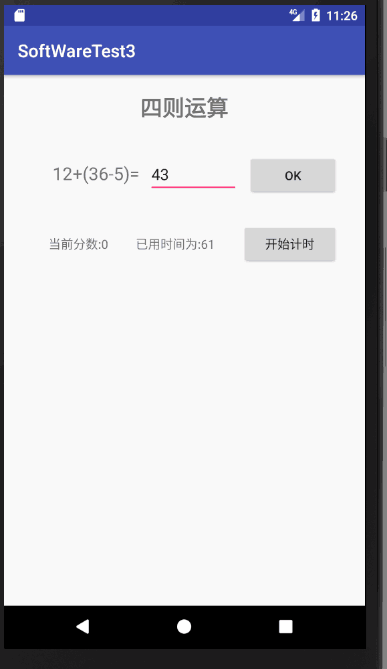
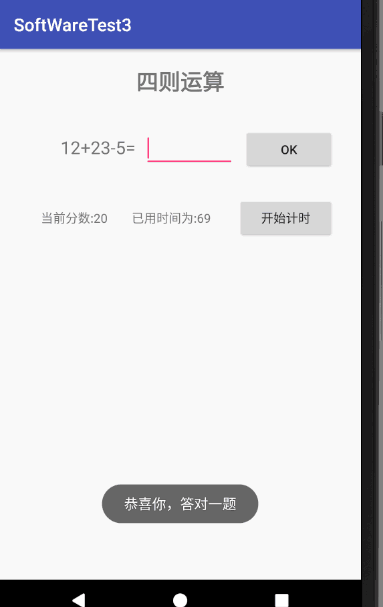
测试结果统计:
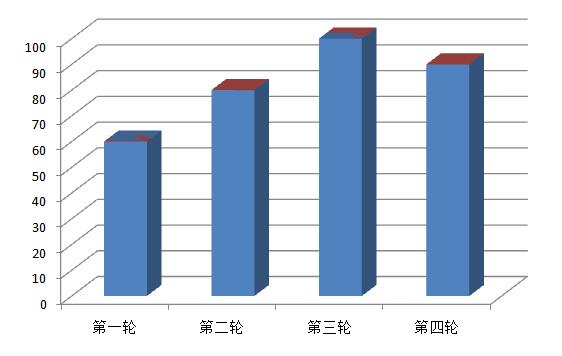
(5)本次设计的PSP:
|
PSP2.1 |
任务内容 |
计划共完成需要的时间(天) |
实际完成需要的时间(天) |
|
Planning |
计划 |
9 |
14 |
|
Estimate |
估计这个任务需要多少时间,并规划大致工作步骤 |
0.5 |
1.5 |
|
Development |
开发 |
9 |
10.5 |
|
Analysis |
需求分析 (包括学习新技术) |
1 |
0.5 |
|
Design Spec |
生成设计文档 |
0.5 |
0.5 |
|
Design Review |
设计复审 (和同事审核设计文档) |
0.5 |
0.5 |
|
Coding Standard |
代码规范 (为目前的开发制定合适的规范) |
0.5 |
0.5 |
|
Design |
具体设计 |
1 |
1 |
|
Coding |
具体编码 |
4 |
6 |
|
Code Review |
代码复审 |
1 |
1 |
|
Test |
测试(自我测试,修改代码,提交修改) |
0.5 |
0.5 |
|
Reporting |
报告 |
1.5 |
1.25 |
|
Test Report |
· 测试报告 |
0.5 |
0.5 |
|
Size Measurement |
计算工作量 |
0.5 |
0.25 |
|
Postmortem & Process Improvement Plan |
· 事后总结 ,并提出过程改进计划 |
0.5 |
0.5 |
(6)请使用汉堡评价法给你的小伙伴一些点评。
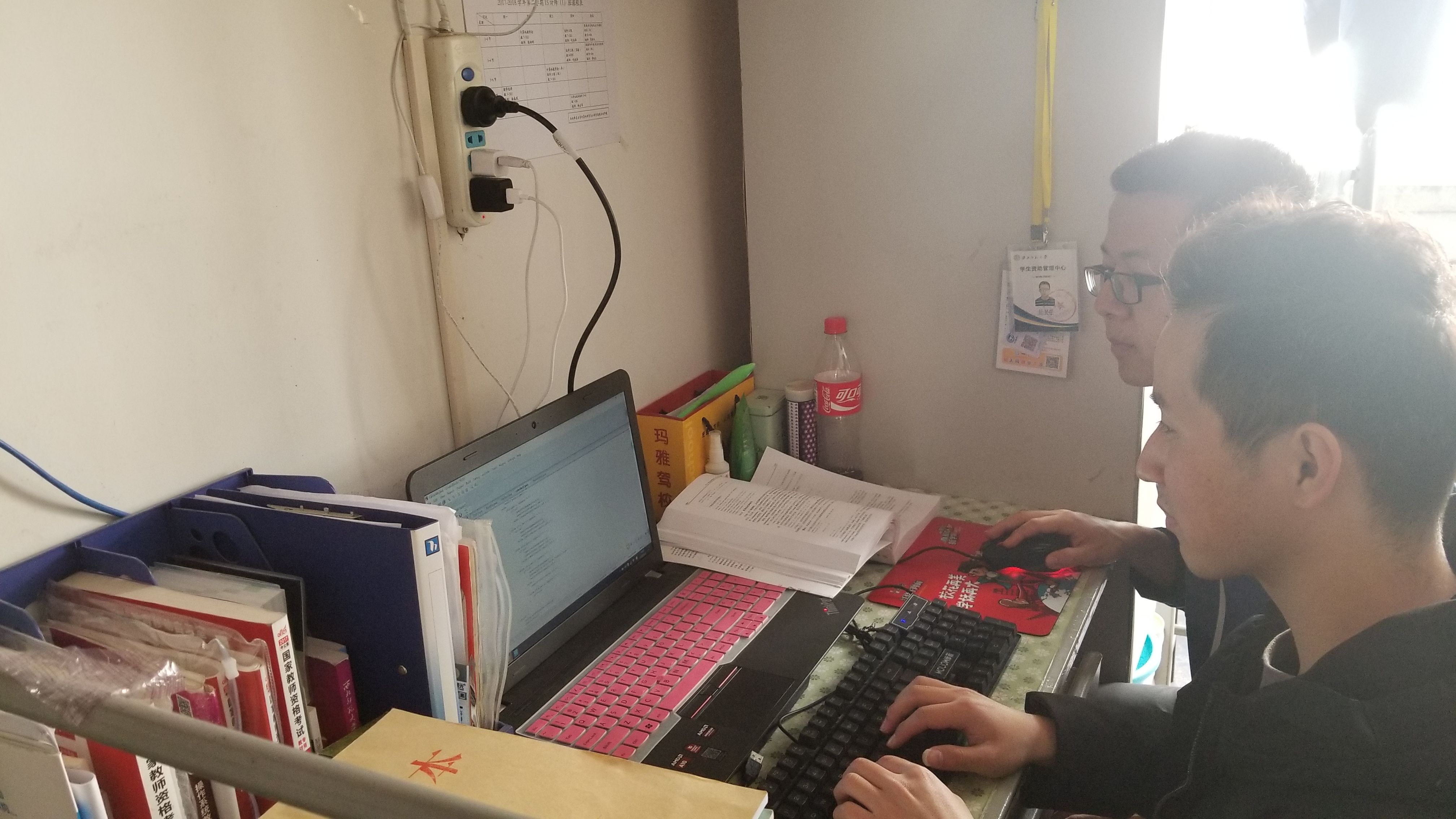
和我合作的小伙伴是一个思维能力很强的人,并且也很有想法,他的编程能力很强。在项目规划设计前期,我原本的计划是用Java设计一个面向对象的用户界面,他提出了他的想法,他想用上学期所学的安卓开发技术来做一个APP用户界面,我们通过讨论,觉得他的方法可行,并且比用Eclipse中开发设计要简单许多,通过使用他的策略,使得项目开发节省了很多时间。和他合作开发这个小项目的过程中,我提高了很多,改变了我的一些原来的软件设计思路。两个人通过努力,基本上实现了老师的项目要求,合作的也很愉快,期待能在以后的项目开发中继续能和他合作。
(7)结对编程真的能够带来1+1>2的效果吗?通过这次结对编程,请谈谈你的感受和体会。
结对编程真的能够带来1+1>2的效果,这是值得肯定的。在本次实验项目开发中,我俩分工合作,我主要负责题目的运算和分数统计,和我的伙伴他主要开发设计用户界面,以及计时器等;我们两个人合作完成项目,能够互相发现编程中存在的问题与不足,共同思考遇到的难题,两个人的思考能够把问题考虑的更加全面,也能让算法更优,这些都是一个人无法做到的。我也在此次开发编程中发现自己的代码比较乱,条理不是很清晰,这些是我的不足,我应该要向伙伴多学习和请教,使得我的代码更加完美,让自己的能力得到提高。我也确确实实感受到了团队合作的力量有很大的潜力。





